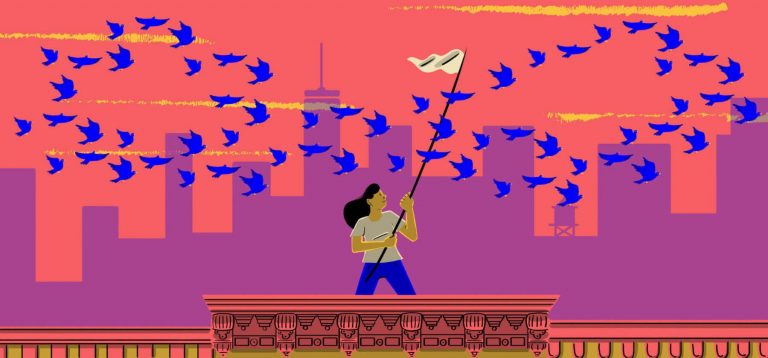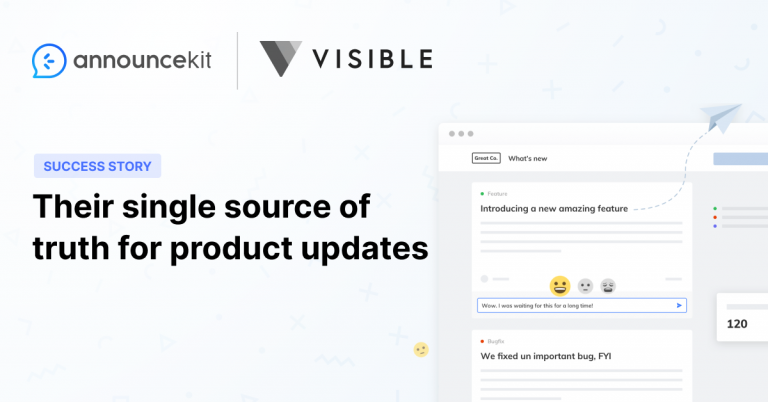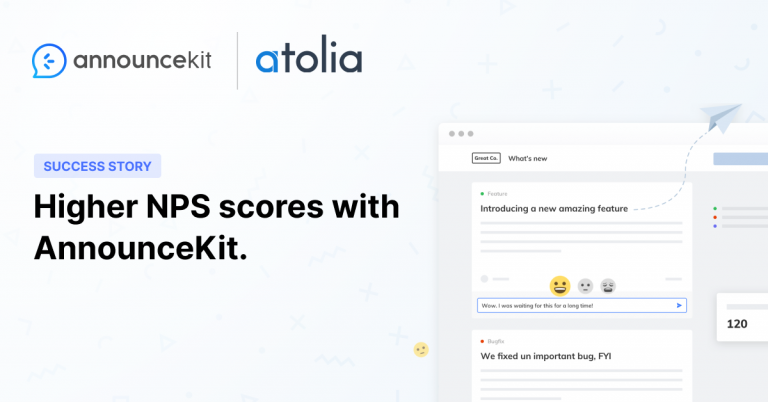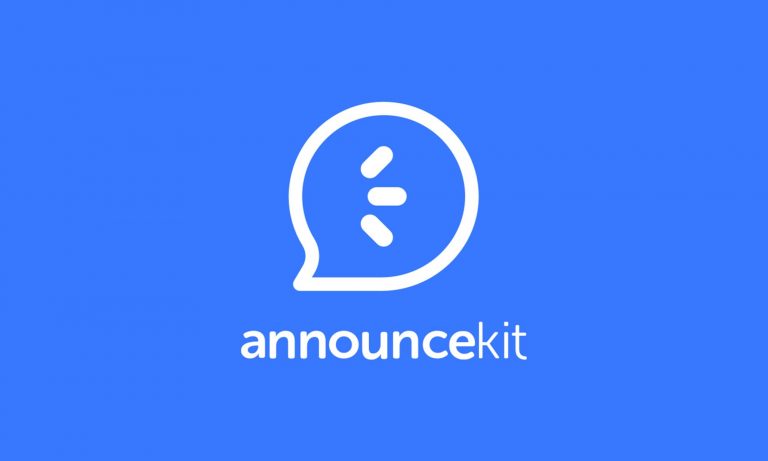For some SaaS product managers or users, feature requests may seem like a simple concept. Do you think it’s just a concept that refers to the feature requests of users? Or is it a much larger concept that impacts the development and growth of the product along with new feature demands?
Based on my experience over the years in the SaaS universe, I would vote for the second question. You ask, “Why?” Of course, I’ll give you some reasons!
SaaS products enter a cycle from the moment they meet their users. We call this cycle the “product life cycle.” Let’s imagine we are a team and we are meeting the specific needs of people or companies. Let’s see how our product will take place in a cycle. 👀
We brought our product into the ecosystem by developing great features, we launched it, and we started to make people’s work easier by gaining new customers:
- Users started to demand new features they needed in the product from us. — the feature request phase
- As the product team, we sorted the demands according to certain criteria and started to develop new features. — the development phase
- We announce these features through various channels so that the features we develop are understood and adopted — the new feature announcement phase.
- Our users, who use the features we develop, start to leave feedback (sometimes we request it) — the feedback collecting phase.
- We evaluate the feedback like a request and prioritize it. The feedback is then used to improve the announced feature. (Puff! You see that we’re back on the first phase now.)
As you can see, there are some phases that follow each other, and each phase feeds the next phase with the insights contained within it. We are constantly building new structures for our product, and feature requests are an essential part of these structures.
Managing feature requests can also be a daunting task, as it requires balancing the needs and wants of our customers with the resources and capabilities of our team. In this blog post, we’ll dive into the world of feature requests and discuss how to effectively handle them in order to make the most of their potential.
AnnounceKit is a feature request software that allows you to easily gather requests from customers, prioritize them, and take action. Click on the link in the last sentence to see all the details.
What exactly is a feature request?
A feature request is a request from a user or customer for a new function or feature to be added to a software application or SaaS product. These requests are typically made because the user believes that the new feature would be beneficial to them, and may even be necessary for them to use the product effectively.
Feature requests are often made by users who have identified a gap in the functionality of the product, and would like to see this gap filled in order to improve their experience with the product.
Feature requests are typically considered and prioritized by the development team responsible for the product, and may be implemented in future updates or releases of the product if they align with the overall roadmap and goals of the company.
What are the types of feature requests?
Users actually unwittingly provide feature requests in different categories to the product teams. Then product teams categorize and prioritize these requests. I heard you! You are asking me what the different types of requests are. 🤓
Enhancements:
These requests involve improving or adding to existing features in a product or service. For example, a customer may request that a website include a search function to make it easier to find specific content.
New features:
These requests involve the creation of entirely new features or functionality in a product or service. For example, a customer may request that a mobile app include a feature that allows them to track their daily exercise routines.
Integrations:
These requests involve the integration of a product or service with other tools or systems. For example, a customer may request that a customer relationship management (CRM) system be integrated with their email marketing platform.
Bug fixes:
These requests involve the resolution of issues or defects in a product or service. For example, a customer may report a bug in a software application that causes it to crash when certain actions are taken.
How to Collect a Feature Request?
As I mentioned above, collecting a feature request from a user is essential for product development at a SaaS company. To improve your product and retain your customers, you need to understand what your users want and need.
You don’t need to think for long hours to understand these needs; just listen to your users! I’m sure the following question immediately comes to mind: How do we listen to our users and collect their requests?
Here are a few tips for collecting feature requests from your users:
- Surveys: Surveys are an easy way to collect requests and feedback from your users as we mentioned before. By creating a survey, you can ask your users about the features and improvements they expect the most. You can then send these surveys to your users via email. Also, you can use SurveyMonkey for creating effective surveys.
- User interviews: User interviews are a great way to get detailed and qualitative requests. Reach the group of users who interact with your product the most and have a 30-minute conversation with them. You can ask about their experience with your product, what they like and don’t like, and what features they want added.
- Community forum or social media groups: You can create a community forum or social media group for your product where users can post requests and discuss new ideas. If I see a SaaS product that is responding to a feature request from social media, I add this product to my list for my future needs!
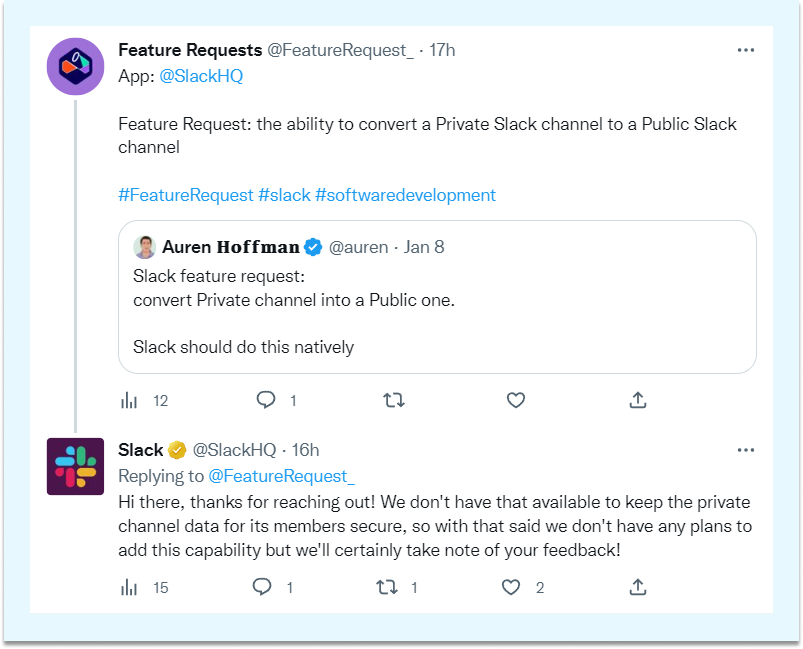
- In-app requests: I left the most effective method for last. Many SaaS companies include an in-app feedback button or form that allows users to submit feature requests without leaving the app. This can be a great way to collect requests in real-time and understand what users expect when using your product.


When collecting requests, make sure processes are as easy as possible. Users no longer tend to perform actions with more than three steps. Also, try not to allow them to escape from the product. They should handle every detail of your product within the product.
We collected requests and examined a great feature request template. Next are the issues of how to manage and prioritize them!
Best Tips for Handling All Requests:
I mentioned the many channels and sources you can collect requests from—feature requests from social media, requests created within the application, surveys and customer interviews, etc. Even a user who has not yet purchased your product can suggest features to you in demo meetings.
It can be challenging to manage all the different requests that come from users.
Actually, managing feature requests successfully is similar to a teacher’s method of trying to harmoniously handle different students in a classroom. Yes, we will do that like a teacher. We will collect them in a single place to evaluate and manage various requests.
A centralized feedback request management system allows for better collaboration between different teams within a SaaS company. The feature request management system can be used by product managers, developers, and customer service teams to talk about how to best implement new features.
If you want to keep track of all your feature requests properly, there are a few things you can do:
- Create a document and add an icon next to each one. This makes it easy for everyone on your team to see what features are being requested and gives them an easy way to add their own ideas and suggestions. Also, add some images or screenshots if necessary.
- Make sure you have someone from the team review each feature request before moving on to the next one.
- Set specific time goals to complete requests. In this way, you can add new features and make improvements to your product with maximum performance. In short, you can use your sources more effectively.
- Prioritize requests in order of importance. Adding a design-related feature while waiting for a major bug fix would not be a wise decision. (A more detailed section on prioritization will be waiting for you at the bottom of the page!)
- Informing your users about feature requests can further strengthen their bond with your product. You can share the status of the demands with them or you can share when the feature they request will be added to the product. (Don’t worry! I will explain all these communication processes and forms in detail.)
How We Prioritize SaaS Feature Requests?
Next up is to prioritize requests that we collect in one place! The first method we can use for prioritization is the voting system. If you can create a voting system where your users’ feature requests can be voted on, you can understand which feature the majority wants the most. This can help you prioritize requests that are most important to most of your customers.
The second method is the Ice Prioritization Framework which you can use to make decisions with your team! 🧊

The Ice Prioritization Framework is a popular way to prioritize SaaS feature requests. The framework is based on three main criteria: Impact, Trust, and Effort. These criteria help SaaS companies understand the importance of each feature request and decide which ones should be prioritized.
Let’s make some decisions for our imaginary SaaS product: We will be evaluating two different feature requests for each criterion.
Impact: A higher score is given to a feature request that can bring in more money or make customers happier.
Confidence: A feature request that is simple and straightforward to implement is given a higher trust score.
Ease: A feature request that requires a significant amount of time and resources will be given a lower effort score.
To use the Ice Prioritization Framework, product teams must assign scores for three criteria. Scores can be given on a scale of 1 to 10, with 10 being the highest score. After all feature requests are scored, they can be ranked according to their total score. Feature requests with the highest score should be given priority.

By evaluating the impact, confidence, and effort required for each feature request, SaaS product teams can make informed decisions on which features to prioritize and implement.
How can we inform a user of a feature request?
Responding to the requests of your users and informing them at certain periods allows you to satisfy your user base. Since you are a customer yourself, you can empathize very well in this situation.
The rule is actually pretty simple. Whatever you like as a user, you will do the same for your users. Do you like companies that communicate well? Do the same thing for your users!
Tip 1: Send notification emails to your customers that you have received their requests. In this way, they will feel that these requests are really taken into account by someone instead of getting lost in the endless internet universe.
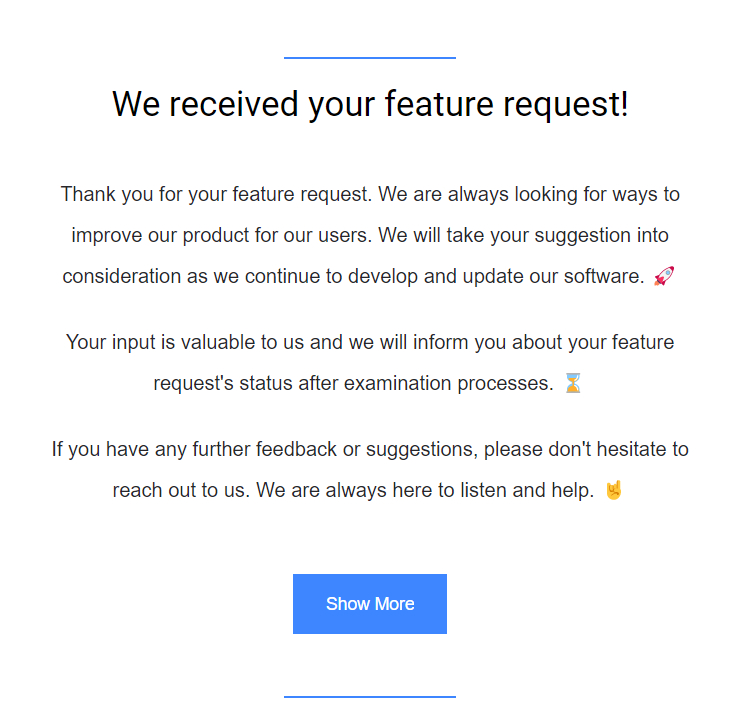
Tip 2: If the requested feature is not clear enough for you, do not hesitate to contact them and ask questions. Maybe your user made a different request than you perceive.
Tip 3: Not every feature request is a real need. Sometimes users may even request a feature that actually exists when they do not fully understand how the product functions. If you’re not going to include the feature request in your plan, be honest and share it with your user.
Tip 4: Inform your customers about the status of requests and updates. As we have examined in the Milanote example above, they have created a page just for these updates, and they inform their users by constantly updating this page.
Follow the steps above and make your customers feel valued because it has always made users happy to see that their demands are met! 😀
Would you want to collect feature requests on AnnounceKit?
AnnounceKit is a tool that allows users to easily create and manage announcements. It provides a simple and customizable interface for users to create and deliver announcements, such as new features, updates, and news.
AnnounceKit ensures that its users minimize the time and energy that they spend creating, managing, and delivering announcements to their target audience, thanks to its many great features.
Besides creating and managing announcements and collecting user feedback about announcements, a game-changing feature will be available soon on AnnounceKit.
With AnnounceKit, you can use our feature request tool to share feature requests with SaaS teams. In addition, the teams will use the public roadmap to inform their users about what they are working on and what features will be added to the product in the future.
Stay tuned for more new features!✌️
Wrapping up 🥙
To sum up, SaaS feature requests are an important part of product development processes. Your users are constantly knocking on your door with suggestions to improve their product experience and your product. Because of all the positive effects I mentioned in this article, feature requests should be collected regularly by SaaS teams and included in their business plans.
By finding a good balance between customer feedback and internal priorities, SaaS companies can be sure that their products are always getting better and giving their customers more value.
Overall, SaaS feature requests are a valuable tool for companies to gather customer feedback, prioritize new features, and continually improve their products. SaaS companies can also increase satisfaction by actively listening to customer feedback. 🤓


